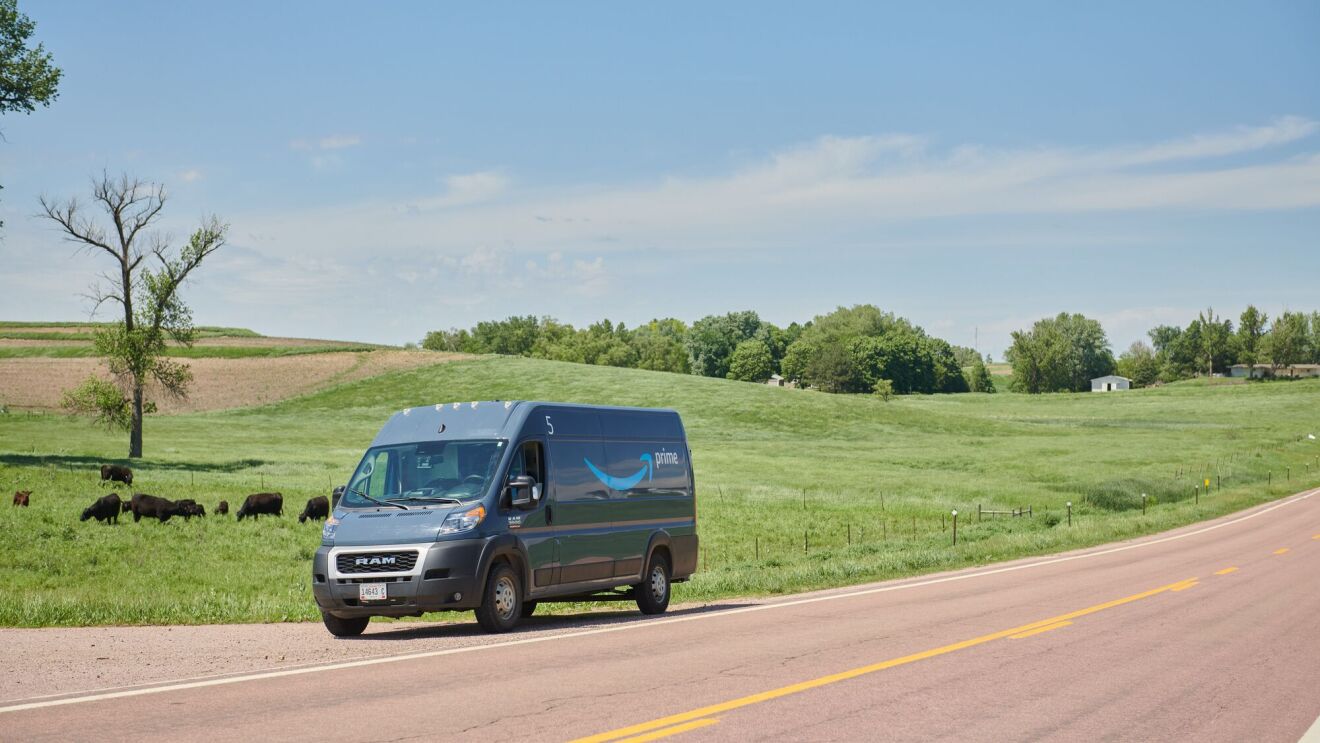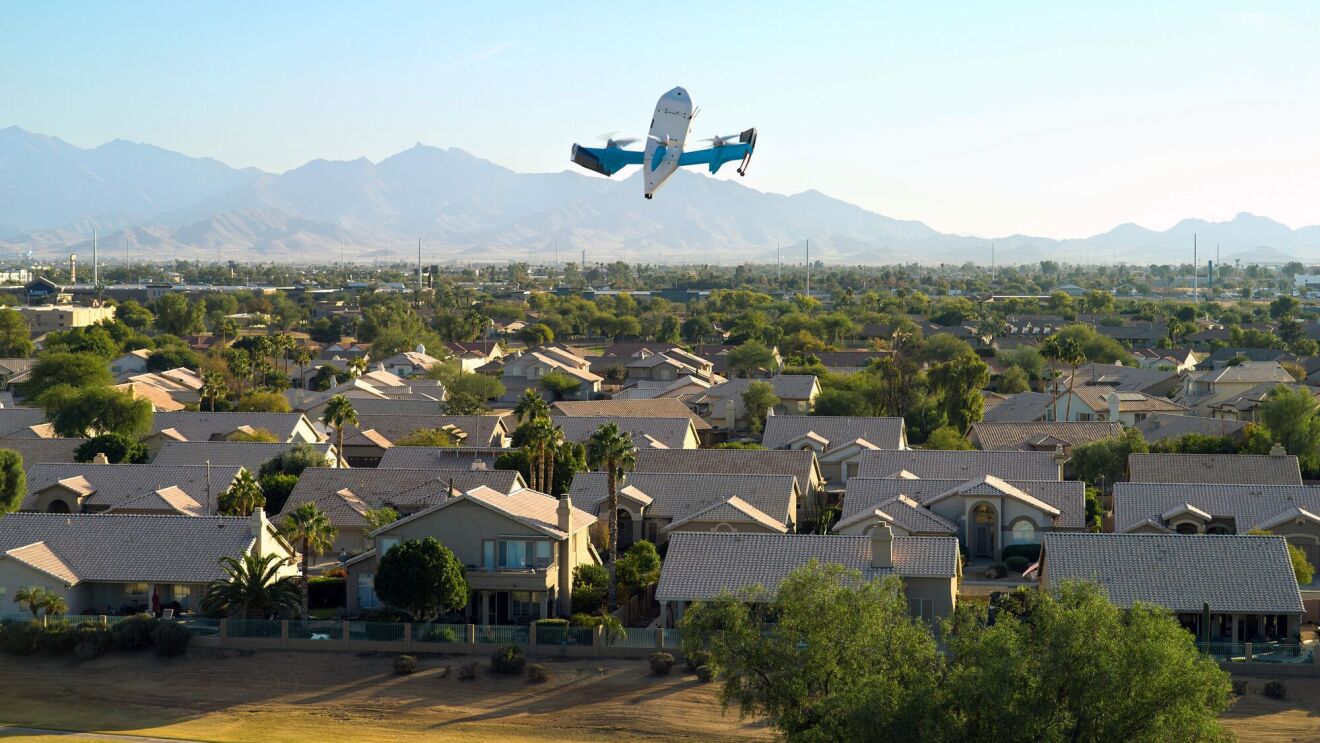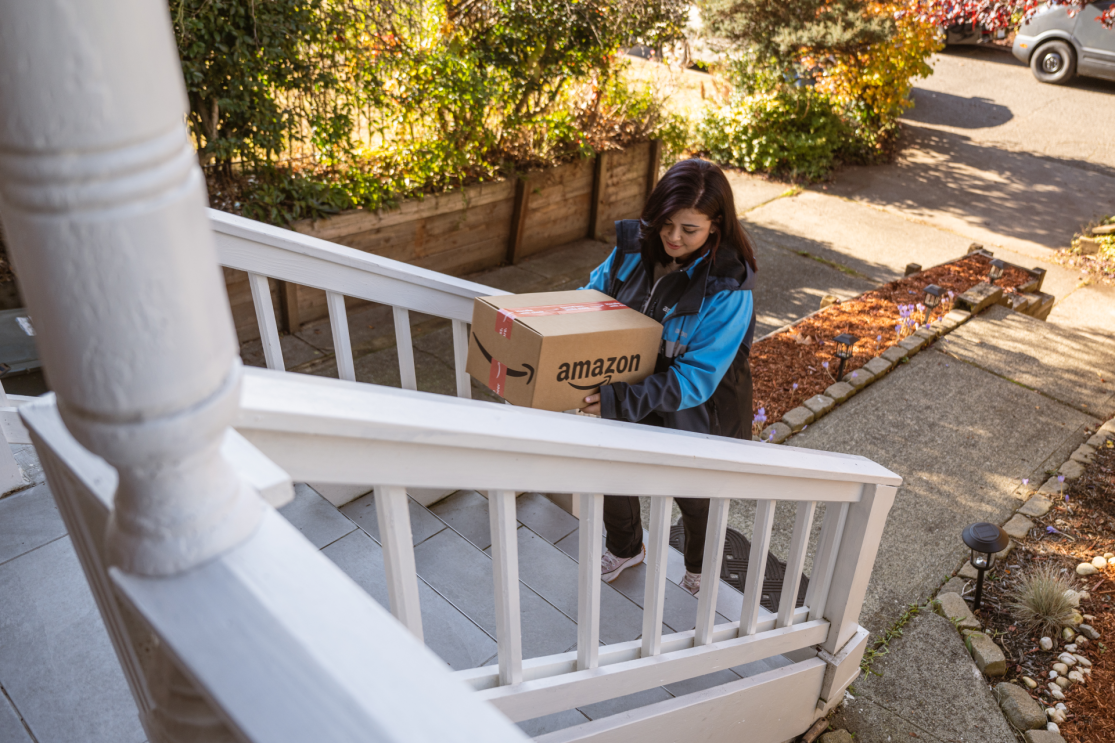The promise of drone delivery has often felt like science fiction. We’ve been working for almost a decade to make it a reality.
The challenge: How do you get items to customers quickly, cost-effectively, and—most importantly—safely, in less than an hour? And how do you do it in a way that can scale? It’s relatively easy to use existing technology to fly a light payload a short distance that’s within your line of sight, but it’s a very different challenge to build a network that can deliver to customers across large communities.
Our teams of hundreds of scientists, engineers, aerospace professionals, and futurists have been working hard to do just that—and later this year, Amazon customers living in Lockeford, California, will become among the first to receive Prime Air deliveries.

Lockeford has historic links to the aviation industry. The community boasts one of the early pioneers of aviation—Weldon B. Cooke, who built and flew early planes in the early 1900s—as a former resident. Now, over a century later, residents will get the opportunity to sign up for free drone delivery on thousands of everyday items.
Lockeford residents will play an important role in defining the future. Their feedback about Prime Air, with drones delivering packages in their backyards, will help us create a service that will safely scale to meet the needs of customers everywhere—while adding another innovation milestone to the town’s aviation history.
As we launch the service in Lockeford, we’ll also be investing in the community, creating new jobs, building partnerships with local organizations, and helping reduce carbon emissions—all thanks to this futuristic technology that could one day become just as common as seeing an Amazon delivery van pull up outside your house.
"Lockeford residents will soon have access to one of the world's leading delivery innovations,” said California State Assemblyman Heath Flora, whose district includes Lockeford. "It's exciting that Amazon will be listening to the feedback of the San Joaquin County community to inform the future development of this technology."
We are working with the Federal Aviation Administration (FAA) and local officials in Lockeford to obtain permission to conduct these deliveries and will continue with that collaboration into the future.
What’s different about Prime Air?
The logistics industry is abuzz with all-things drones. But not all drone systems are equal. For example, most drones do not have the capability to sense and avoid other aircraft and obstacles—and it’s easy to understand why that could pose problems. Those systems will require visual observers along the route of every flight to help the drones avoid hazards. That type of drone can be deployed relatively quickly, but it limits delivery operations to a small radius.
We’re building something different. We’ve created a sophisticated and industry-leading sense-and-avoid system that will enable operations without visual observers and allow our drone to operate at greater distances while safely and reliably avoiding other aircraft, people, pets, and obstacles.

We designed our sense-and-avoid system for two main scenarios: to be safe when in transit, and to be safe when approaching the ground. When flying to the delivery location, the drones need to be able to identify static and moving obstacles. Our algorithms use a diverse suite of technologies for object detection. Using this system, our drone can identify a static object in its path, like a chimney. It can also detect moving objects on the horizon, like other aircraft, even when it’s hard for people to see them. If obstacles are identified, our drone will automatically change course to safely avoid them. As our drone descends to deliver the package into a customer’s backyard, the drone ensures that there’s a small area around the delivery location that’s clear of any people, animals, or other obstacles.
Since the inception of Prime Air, we have designed, built, and tested many drones. In fact, we’ve created more than two dozen prototypes. Below are some of our designs, including our latest version, which we’re excited to now use to make customer deliveries in real-world environments.
01 / 04
We’ve worked closely with the FAA and other regulators throughout. Prime Air is one of only three drone-delivery companies that has gone through the rigorous process to earn a FAA air carrier certificate, which will be required to operate drones using these advanced capabilities.
It took years of inventing, testing, and improving to develop these breakthrough technologies, and we’re excited to use them to make customer deliveries.
What’s next?
Once onboarded, customers in Lockeford will see Prime Air-eligible items on Amazon. They will place an order as they normally would and receive an estimated arrival time with a status tracker for their order. For these deliveries, the drone will fly to the designated delivery location, descend to the customer’s backyard, and hover at a safe height. It will then safely release the package and rise back up to altitude.
We’ll share photos and videos of our progress as we go, and we look forward to continuing to learn as we methodically expand this program to more customers in months and years to come.
Our journey continues—stay tuned for updates.
Trending news and stories














